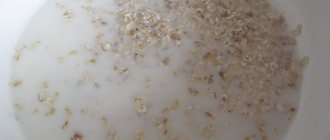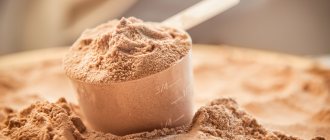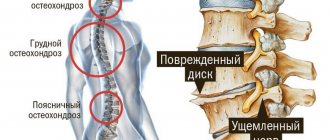To achieve optimal athletic performance, as well as an ideal body, most athletes use specialized nutritional supplements. One of the most popular varieties of such nutrition is powdered milk formula, but many athletes undeservedly neglect this product. We'll take a closer look at why they're important to bodybuilders, and also find out when and how to drink powdered milk.
- The use of milk powder in bodybuilding
- Advantages
- Flaws
- When and how to drink
- Popular myths about milk powder
- Difference between protein and milk powder
- Other high protein foods
The use of milk powder in bodybuilding
It is no secret that athletes need a complex of certain substances, from which the construction of both individual cells and entire groups of tissues directly occurs. One of the most popular among them is protein.
To compensate for the deficiency of this substance, athletes most often use concentrates of dairy products, including milk powder.
Did you know? A product such as milk powder has been known to mankind since ancient times. Another famous traveler Marco Polo wrote about a paste-like dairy product made from sun-dried milk raw materials, which the Mongol-Tatars used as food during long campaigns.
The milk concentrate contains almost the entire list of the most important amino acids for athletes, as well as vitamins and microelements. Thanks to this, its daily use can improve well-being and athletic performance.
But, despite this, the product differs not only in its advantages, but also has quite serious disadvantages.
Advantages
The main advantages of this mixture in bodybuilding:
- high digestibility;
- contains all the amino acids necessary for athletes;
- promotes rapid weight gain;
- One serving contains the daily requirement of vitamin B;
- low price;
- does not require heat treatment before use;
- can be used by athletes with diabetes and chronic diseases of the digestive system.
Flaws
Among the product's disadvantages, the most important for athletes are:
- low percentage of proteins in the total mass (in relation to other sports nutrition);
- increased content of lactose - one of the main allergens;
- high fat content;
- the need for special storage conditions;
- a huge number of various side impurities, relative to the main substances.
Did you know? A modern analogue of powdered concentrates of dairy products was first obtained in 1802 by the Russian scientist and doctor Osip Krichevsky.
When and how to drink
Athletes take milk powder as an additional source of protein for muscle growth or weight gain before competitions. To achieve the optimal effect, the amount of protein consumed with the product at one time should be about 30 g.
Therefore, a serving of a protein shake should be based on at least 100 g of powder. A large concentration of pure protein is not harmful to the body, but it will not cause any additional effect. If you are preparing a complex mixture of different proteins, then the concentration of milk powder is reduced.
The cocktail is often taken three times a day, morning and afternoon. In the evening and at night, powdered milk is not recommended, as excess fat in its composition will negatively affect the appearance of the body. Drink it in between main meals.
On the day of training, one of these cocktails should be consumed immediately after training in the gym, this will help to instantly saturate the body with the substances necessary for the post-workout period.
During preparation, the product is thoroughly mixed with water, yogurt, kefir or other liquids. If you want to reduce the calorie content of the cocktail, you should prepare it with water, without any additives or sweeteners.
The mixture can also be used as an additional ingredient for all kinds of dishes (milk porridges, desserts, etc.) or drinks (coffee, yogurt, etc.), as a milk substitute.
Important! The protein shake
should not contain lumps, so you need to use a blender or food processor to prepare it.
Milk[edit | edit code]
Dairy products as a source of protein
Milk
has long been considered one of the best means for building muscle mass in bodybuilding. However, some athletes are allergic to lactose (the sugar in milk) or have a lack or absence of enzymes in their bodies that digest it. In this case, drink kefir, yogurt, eat cottage cheese and cheese, i.e. those dairy products from which lactose has been removed during industrial processing. By consuming them, you can get the same effect as from 2-3 liters of milk per day. You can also purchase lactase tablets at pharmacies, an enzyme that breaks down lactose, and take them with milk. If you have no problems digesting milk, then give preference (if possible) to fresh, raw milk instead of pasteurized milk. It is advisable to do this also because the modern dairy industry is far from ideal and the milk that is sold in stores can be saturated with various harmful additives, and this will not have the best effect on your health.
By the way, if milk enters the stomach along with other foods at the same time, then there are much fewer problems with lactose intolerance. Therefore, try to wash down your regular meals with 1-2 glasses of milk during the stage of gaining muscle mass. This way it will be better absorbed, and as you gain weight, things will be much more fun.
Milk for bodybuilders has another beneficial property. The fact is that high-calorie nutrition leads to increased secretion of all anabolic hormones, including insulin. The danger is that insulin will certainly convert some of the carbohydrates eaten into subcutaneous fat. This is due to its natural function - to create emergency fuel reserves in the body. So, milk blocks this function of insulin. If you drink it while gaining muscle mass, you will accumulate less fat!
In a study conducted in 2020[1] It has been shown that high milk consumption can reduce life expectancy by increasing oxidative processes in cells.
Milk production and processing[edit | edit code]
The industry produces pasteurized and sterilized milk. Pasteurization
, simply put, is heating milk. Thus, under the influence of high temperature, harmful microorganisms that may be in it are destroyed (though not all of them), and the shelf life of milk increases. True, heating does not go unnoticed for many bioactive substances that are useful and important for health. Under the influence of high temperature they are destroyed.
Sterilization
- This is a deep heat treatment of milk, when it is heated to a temperature of 130-140 degrees. No germs can survive here! The shelf life of sterilized milk is calculated in months, but there is very little benefit in such milk. It can be compared to ordinary water in which several tablespoons of powdered milk are dissolved. There are no living factors in it by definition.
The best milk, of course, if you can get it, is fresh milk. If you start spicing up your strength training with liters of fresh milk, you will immediately notice an increase in muscle mass and strength. In addition, you will increase the level of the so-called. “general health”, without which strength and other sports records cannot be achieved.
What is the secret of fresh milk? As science has established, it contains “live” immunoglobulins that enhance immunity, natural antitoxins, as well as very special compounds called cytokines. By the way, the same cytokines are also produced in the human body. They perform a variety of tasks in our body, but one of them is truly unique. They interfere with the genetic apparatus of stem cells, causing them to degenerate into muscle cells.
As is known, stem cells are formed in the bone marrow and do not have their own “face”. Together with the blood, they “travel” throughout the body and, if necessary, turn into cells of certain tissues of the body.
When you exercise, muscle cell fibers tear. Their healing occurs under the influence of stem cells, which in turn are controlled by cytokines.
Boiling destroys most of the cytokines in milk. When you drink fresh milk, cytokines increase in your body, and therefore muscle growth accelerates.
Currently, science has described several dozen cytokines, but it is impossible to accurately determine the function of each. The role of cytokines is universal. They often replace each other or act together. However, American scientists have achieved the incredible. From colostrum, the secretion of the mammalian mammary gland that is formed in the first postpartum weeks, they isolated cytokines that stimulate protein synthesis. It is the presence of these cytokines that explains the uniquely rapid growth of infants, in whose body, of course, there are no anabolic hormones. If such cytokines are introduced into the body, where the process of muscle growth, triggered by physical exercise, is already underway, we will get a fantastic increase in muscle mass. The use of cytokines on rats led to an increase in their physical size almost doubling!
It is curious that the research was initiated by the head of the famous Scott Connelly solely in the interests of bodybuilders. The drug, called Pro-genex, is about to enter the human trial stage. As Connelly promises, he will close the steroid era in our sport, but will lead to the birth of previously unheard of monsters of muscle mass.
When it comes to the quality of milk and dairy products, if you have a choice, go for goat milk. In all its indicators, it overlaps with cow's milk and is absorbed much better.
| TABLE OF MACRONUTRIENT CONTENTS IN MAIN DAIRY PRODUCTS AND RECOMMENDATIONS CONCERNING THEIR USE | ||
| PRODUCT TYPE | COMPOSITION OF MACRONUTRIENTS | HOW TO USE |
| Whole milk (250 g) | 146 cal, 8 g protein, 11 g carbs, 8 g fat | Occasionally; before and after training by adding whey protein |
| Low-fat milk 2% (250 g) | 122 cal, 8 g protein, 11 g carbs, 5 g fat | Before and after training, adding whey protein; After your workout, add some chocolate syrup as well. |
| Low fat milk 1% (250 g) | 102 cal, 8 g protein, 11 g carbohydrates, 2 g fat | Before and after training, adding whey protein; After your workout, add some chocolate syrup as well. |
| Skim milk 0% (250 g) | 83 cal, 8 g protein, 11 g carbohydrates, 0 g fat | Before and after training, adding whey protein; After your workout, add some chocolate syrup as well. |
| Cheddar cheese (1 slice) | 113 cal, 7 g protein, 0 g carbs, 9 g fat | Rarely |
| Low fat Cheddar cheese (1 slice) | 49 cal, 7 g protein, 1 g carbs, 2 g fat | Add to scrambled eggs, salad or sandwich for a protein boost |
| Parmesan cheese (1 slice) | 121 cal, 11 g protein, 1 g carbs, 8 g fat | Rarely |
| Homemade cheese (1 slice) | 232 cal, 28 g protein, 6 g carbs, 10 g fat | Before bedtime |
| Low-fat homemade cheese (1 slice) | 163 cal, 28 g protein, 6 g carbs, 2 g fat | Before bedtime |
| Low-fat cottage cheese (1 slice) | 123 cal, 25 g protein, 3 g carbohydrates, 1 g fat | Before and after training as a source of casein; before bedtime |
| Low fat natural yogurt | 143 cal, 12 g protein, 16 g carbs, 4 g fat | As a separate meal (add whey protein); to increase protein content in the diet |
| Low-fat natural yogurt | 127 cal, 13 g protein, 17 g carbs, 0 g fat | As a separate meal (add whey protein); to increase protein content in the diet |
| Low fat fruit yogurt | 225 cal, 9 g protein, 42 g carbs, 3 g fat | To increase carbohydrate intake (add whey protein) |
| Low-fat fruit yogurt | 213 cal, 10 g protein, 43 g carbs, 0 g fat | Post-workout to increase carbohydrate intake (add whey protein) |
Example of a dairy diet
- 1 meal (pp.): 5-10 egg whites;
- oatmeal;
- cottage cheese or cheese +1-3 tsp. linseed oil;
- 2 p.p.: buckwheat or rice porridge;
- 1-2 glasses of low-fat milk.
- 3 p.p. before training: buckwheat or rice porridge with raisins and honey (1-3 tsp);
- 1-2 glasses of low-fat milk.
- 4 p.p. after training: buckwheat or rice porridge with raisins and honey (1-3 tsp);
- 2-4 slices of whole grain bread;
- 1-2 glasses of low-fat milk.
- 5 pp: rice with honey (1-3 tsp);
- 1-2 glasses of low-fat milk.
- 6 p.p. before bed: 1-2 glasses of kefir + cottage cheese or cheese if desired.
Total per day (depending on the size of the portions): Cal - 3000-3600, proteins - 150-200 g, carbohydrates - 450-550 g, fats - 30-50 g.
In the 2020 study. Scientists have proven that eating cheese does not affect cholesterol levels.[2]
Popular myths about milk powder
Despite the fact that milk concentrate has been actively used by humanity for many decades, this product has acquired many legends and stereotypes during its use.
The largest number of them is observed in the field of sports, which often does not have a positive effect on its popularization, even despite the fairly low price, therefore, before including this product in your diet, you should definitely understand what it really is.
Learn about the benefits and harms of amino acids for muscle growth.
The most common controversial statements about milk powder:
- it leads to the formation of cholesterol in the blood. As you know, this product actually contains the most harmful, oxidized form of cholesterol, but today skimmed forms of milk are often used for production purposes, so their final concentration is not quite high. In addition, enriching your diet with fresh fruits and vegetables while drinking protein shakes will help you completely protect yourself from cholesterol;
- the product necessarily leads to obesity in athletes. Powdered milk does have a fairly high fat content compared to other sports nutrition, but this figure is 20–30% less than that of fresh milk, so when consumed in moderation, the mixture does not cause fat accumulation;
- industrially produced food is not natural. The production of this mixture is based exclusively on the use of natural milk, and the components contained in its composition cannot be reproduced artificially. In addition, a liquid lyophilization line is much cheaper and more cost-effective than a complex organic synthesis laboratory;
- powdered mixtures may contain harmful vegetable fats. In fact, in many food products, manufacturers replace expensive animal fats with cheaper plant fats. And powdered milk is no exception. You should be afraid of this only if you deliberately purchase mixtures with a high concentration of fats; the bulk of concentrates contain less of them, even than whole milk;
- Powdered food contains preservatives. It is not advisable to use these compounds to increase the shelf life of the product, since its production involves the elimination of the main condition for the development of pathogenic bacteria - available moisture;
- When using a protein mixture, you can refuse to consume plant proteins. This type of nutrition is not comprehensive; during active sports, the body definitely needs meat, since it contains many amino acids that are not available from other foods.
MILK RULES[edit | edit code]
American scientists, finding out the undoubted benefits of sports carbohydrate drinks, like Gatorade, compared its effect with various popular drinks, including whole chocolate milk. To their surprise, this milk turned out to be more effective in restoring the athlete’s strength. This experience was retested in England. And then it was confirmed that adding cocoa powder to whole milk actually speeds up recovery, outpacing the performance of Gatorade.
American scientists also report that whole milk has a better effect on protein synthesis in muscles than skim milk. If you're thinking of using high-fat chocolate milk to boost muscle growth, add a scoop of whey to make sure.
Difference between protein and milk powder
Many aspiring bodybuilders, when developing a protein diet, have a question about whether it is worth replacing expensive sports proteins with regular milk concentrate from the grocery store.
Did you know? The process of industrial production of powdered milk was first organized in 1832 by the Russian chemist M. Dierhoff.
As you know, they are almost identical in appearance, but at the same time they have quite serious differences. They consist not only in price, but also in the composition of the substances.
Proteins in sports often refer to whey protein concentrates made from whey, a derivative of lactic acid fermentation and cheese making. This mixture is distinguished by a huge concentration of fast proteins (about 90–95% of the total mass), which can instantly be involved in all kinds of metabolic processes.
Whey protein contains practically no lactose and fat, so it can be used even for allergic reactions to lactic acid products, as well as for a comprehensive weight loss program.
Find out whether proteins are harmful to health and how they affect the body, and how to drink protein correctly.
In turn, milk powder is an unrefined concentrate of all kinds of proteins and other substances. In addition to fast whey protein, the mixture also includes slow protein isolates (caseins, etc.), as well as a huge amount of calcium and vitamins.
Moreover, the amount of pure protein in such a product often does not exceed 70% of the total mass. The inclusion of cocktails based on such mixtures in the diet contributes to a general increase in body weight, but is not able to have the most effective effect on muscle growth.
In addition, unrefined milk powders are always significantly cheaper than pure isolates of certain proteins. There are many reasons for this, but often this is influenced not only by technological features, but also by the cost of production raw materials.
Important! High-quality powdered milk should be white or slightly yellowish in color, uniform in consistency, and also have a pleasant, specific smell. Other characteristics of the mixture indicate counterfeit or non-compliance with storage conditions, which can lead to poisoning.
Can protein be replaced with baby food?
Dry infant formula, like skim milk, contains “milk sugar” - lactose, which in some cases causes digestive system upset and is also contraindicated for people intolerant to this substance. At the same time, they contain a huge amount of minerals and vitamins necessary for recovery after stress of various types.
In food for children, all harmful impurities are removed to the maximum, but this will not protect against constipation and digestive system disorders if the rules for diluting it are not followed. One should not forget about the large amount of carbohydrates and fats present in the milk formula compared to proteins. This ratio is justified by using the mixture for a rapidly growing child’s body, but is an inappropriate replacement for sports nutrition for bodybuilding.
Replacement of protein with baby food
Other high protein foods
If you are not yet ready to switch to concentrated sports nutrition, you can meet the body’s protein needs with a balanced protein diet. It is based on the consumption of available products from the nearest grocery store.
Leading high protein foods:
| Product | Quantity per 100 g |
| Chicken (breast) | 29 |
| Beef | 28 |
| Mutton | 26 |
| Mozzarella cheese | 26 |
| Lentils | 25 |
| Shrimps | 23 |
| Cod fillet | 21 |
| Squid | 20 |
| Tofu cheese | 16 |
| Buckwheat | 13 |
| Chicken eggs | 12 |
| Peas and beans | 6 |
Powdered milk today is undeservedly ignored by athletes. But, despite this, it makes it possible to instantly and without spending extra money saturate the body with important amino acids, vitamins and calcium, without which it is difficult to imagine the healthy development of muscles and the body.
However, during “drying” milk powders are pointless, since they contain a huge amount of organic impurities that negatively affect weight loss.
Sports and fitness Nutrition during training To gain muscle mass
Composition of milk powder[edit | edit code]
Powdered milk can be whole (WCM) or skimmed (SOM). The differences between these types are in the percentage of substances.
| Nutrients | Whole | Low fat |
| Fat (%) | 25 | 1 |
| Proteins (%) | 25,5 | 36 |
| Lactose (%) | 36,5 | 52 |
| Vitamins and minerals (%) | 9 | 6 |
| Humidity (%) | 4 | 5 |
| Calorie content per 100 g. | 2300 kJ (549.3 kcal) | 1567 kJ (373 kcal) |










